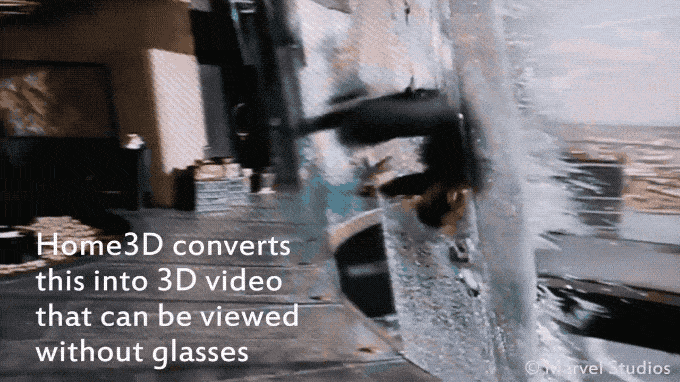MIT’s Computer Science and Artificial Intelligence Lab (CSAIL) has developed a new method for displaying 3D movies at home without requiring the use of 3D glasses, and without some of the downsides of traditional methods for glasses-free 3D video playback.
The method also doesn’t require any new special source material – it converts existing 3D movies from their stereo format to one that’s compatible with so-called automultiscopic displays, a competing tech that is quickly improving in terms of resolution and could have significant potential in the home theater market in the near future.
These automultiscopic displays haven’t been popular thus far as a technology to consumerize for TVs because they aren’t able to play back stereoscopic 3D (like that used for theaters) out of the box. But the MIT CSAIL research team behind this new tech created Home3D, a conversion algorithm that can run in real-time on a GPU like those found in the Xbox One or PlayStation 4, eliminating the format compatibility issue.
Home3D also allows viewers to customize the depth effect depending on their comfort level, and it combines both phase-based rendering and depth image-based rendering techniques for a method that doesn’t sacrifice all that much resolution while still being able to accurately render 3D even for scenes with significant depth, where the left-eye and right-eye images are considerably different from one another.
Home3D could also eventually run on chips embedded in TVs, Blu-ray players or even something like Google Chromecast, making it suitable both for integrated solutions and aftermarket devices. The tech is also helped by the advent and increasing availability of 4K and higher resolutions, since researchers say that while these have diminishing returns for 2D content, they help a lot with being able to render 3D while preserving detail and resolution.
While many TVs and home theater projectors support glasses-assisted 3D, this new research describes a method that could go a lot further in terms of popularizing the tech. It’s still quite far off from commercialization, but it’s an area that both TV makers and content producers should be excited to pursue.
